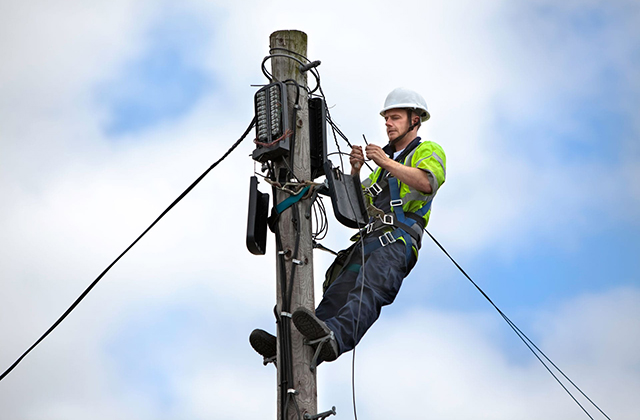Knob and tube wiring was a system of open electrical conductors supported on ceramic knobs. It also used ceramic knobs where wires cross each other or pass through framing. This type of wiring was in common use from the 1880’s to 1930’s, in North America. When working with wiring, electrician Brisbane 24 hours always cut the power supply at the breaker box first before beginning any actual work.
During the era when knob and tube was in common use, a typical home would have 30 or 60 amp electrical service, sufficient for general lighting and maybe a radio. These were the days of “iceboxes”, wood or gas stoves, coal heat, and no air conditioning. Wiring homes was a new trade, with very few rules.
The first home wiring rules appeared around the turn of the century, when Terrell Croft wrote the American Electricians Handbook. Crofts books defined early wiring practices. One of Croft’s rules was that knob and tube wiring should always be run through, never over the house framing. The problem with running wiring over framing is that it can get bumped, snagged, and damaged. Most electrical experts would agree that wiring run over the framing is a sign of amateur, cobbled-together work, and it never conformed to any electrical code.
Good Points
The theoretical advantage of knob and tube wiring is that it dissipates heat into free air, and therefore has a higher ampacity than cable systems with equivalent wire size. When originally installed in the 1900’s knob and tube wiring was less expensive than other wiring methods. Due to the installation cost, owners and electricians would opt for knob and tube versus conduit wiring and metal junction boxes. The conduit methods were known to be of better quality, but their cost was significantly higher than knob and tube wiring.
Modern wiring methods assume two or more load carrying conductors will lie against each other, for instance the standard non-metallic – 2 cable. Since the load carrying wires are in close proximity, when they heat up, the heating is shared across the wires, limiting the overall current load they can support. Since the load carrying wires in knob and tube wiring are widely spaced, the wires are capable of carrying higher loads without risk of fire.
Bad Points
Knob and tube wiring was commonly insulated with cotton cloth and soft rubber, in addition to the porcelain insulators. Although the actual wire covering may have degraded over the decades, the porcelain insulators have a very long lifespan and will keep any bare wires safely insulated. These same porcelain insulators are commonly used with bare wire electric fencing for livestock. These insulators can carry very high voltage surges without the risk of shorting to ground. Many electricians understand that by running the hot and neutral conductors farther apart from each other than today’s electrical cabling does make shorts between those conductors less likely, at the same time realizing there is not a grounding conductor.
Wiring installation standards and methods were less stringent in the era of knob and tube versus modern day electrical codes and standards. The main shortcomings of knob and tube include the following: lack of a safety grounding conductor, inability to confine switching to the hot conductor, the permitted use of in-line splices in walls without a junction box. Compared to modern thermoplastic wiring insulation, typically known as “romex”, the knob and tube wiring is less resistant to damage.
Knob and tube wiring is very vulnerable to mechanical damage, such as from stored materials in the attic or basement. Bending the wire can cause older insulation to crumble and fall off the wires.
Knob and tube is insufficient for current usage patterns. Contemporary households use a wide range and intensity of electrical equipment that was unforeseen at the time of knob and tube inception. Household power use increased following World War II, first generation wiring systems became susceptible to abuse by homeowners, who would avoid repeated blown fuses by overfusing the circuits, thus subjecting the wiring to heat damage due to higher levels of current.
In many instances deterioration and abuse have rendered the wiring unsafe. During building renovations and remodeling wiring can become damaged. The rubber insulation will become dried out, brittle when handled, damage by rodent, or simple carelessness – for example hanging objects off wiring in accessible places like attics and basements.
Covering knob and tube wiring with thermal insulation is unsafe and prohibited. This is a known fire hazard and it is specifically condemned in the National Electrical Code, Section 324-4. No form of insulation – loose, blown-in, or expanding foam insulation can be placed over the wiring. Knob and tube wiring was designed to let heat dissipate to the surrounding air. As a result, energy efficiency upgrades that involve insulating previously uninsulated walls usually also require replacement of the wiring in affected homes.
Homeowners insurance underwriters may refuse and deny coverage for homes and buildings that have this type of wiring installed.
Alan Trauger is a Building Consultant that performs property condition assessments for residential and commercial properties. An experienced and knowledgeable problem solver, understanding processes and issues related to building structures and their systems. An expert witness, trainer, and educator. To view past newsletters on construction and buildings [http://newsletters.alantrauger.com/]
To review authors bio, qualifications, and interest in receiving future email newsletters http://www.alantrauger.com
Article Source: http://EzineArticles.com/expert/Alan_Trauger/500597
Article Source: http://EzineArticles.com/3548768
